
Chennai Tour Pacakges
Chennai Temple Tour Packages
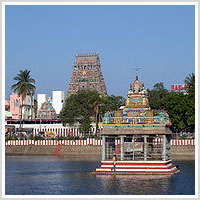 |
Kabaleeswarar Temple |
|---|---|
Kapaleashwarar Temple is located in Mylapore, Chennai, Tamil Nadu. Nayanmars sing hymns in this temple. According to the Puranas, Shakthi worshipped Shiva, in the form of the Peacock, which is why the name Mylai was given to the area that developed around the temple, as 'Mayil' means Peacock in Tamil.The Pallavas kings built the temple around 7CE. The pallava Nayanamars built this temple.
|
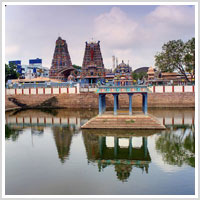 |
Vadapalani Murugan Temple |
|---|---|
Built about 125 years back, this much-hallowed and regularly frequented Lord Muruga sannidhi has emerged from a thatched shed, an unostentatious one enshrining a Murugan picture only, and established for itself a name on par with ancient places of worship. There are very many sannidhis in the vast courtyards of the temple, like Varasiddhi Vinayaka, Chokkanathar, Meenakshi Amman, Kali, Bhairava, Shanmuga with Valli and Devasena, et al. |
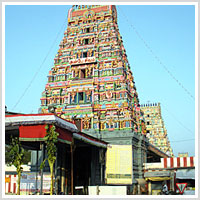 |
Marundeeswarar Temple |
|---|---|
Lord Marundeeswarar is known so because he taught sage Agastya about some magical medicine. Since then The Marundeeswarar temple has been a place of worship for people with diseases and various problems with their health. It is said that even The Sage Valmiki, who wrote The Ramayana, came here to The Marundeeswarar temple to worship The Lord. Sage Valmiki was said to be blessed here.
|
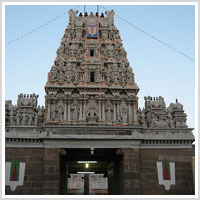 |
Parthasarathy Temple |
|---|---|
The Parthasarathy Temple is an 8th century Hindu Vaishnavite temple dedicated to Lord Krishna.It is one among the 108 divyadesams or holy abodes of Lord Vishnu. The name 'Parthasarathy', in Sanskrit, means the 'charioteer of Arjuna', and Lord Krishna is worshipped in that role in this temple. It was originally built by the Pallavas in the 8th century by king Narasimhavarman I. One of the distinguishing features of is that it has four of the incarnations or avatars of Vishnu: Narasimha, Rama, Varaha and Krishna.
|
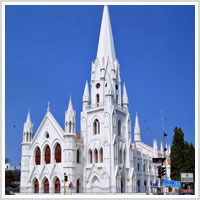 |
Santhome Basilica |
|---|---|
San Thome Basilica is a Roman Catholic minor basilica in Santhome. It was built in the 16th century by Portuguese explorers, and rebuilt again with the status of a cathedral by the British in 1893. The British version still stands today. It was designed in Neo-Gothic style, favoured by British architects in the late 19th century. San Thome Basilica is the principal church of the Madras-Mylapore Catholic Archdiocese. In 1956, Pope Pius XII raised the church to the status of a Minor Basilica, and on February 11, 2006, it was declared a national shrine by the Catholic Bishops' Conference of India.
|



» Mumbai
» Rameswaram
» Kodaikanal
» Kanyakumari
» Munnar
» Palani
» Tiruchendur
» Madurai
» Kumarakom
» Athirapally
» Thekkady
» Ooty
» Bangalore
» Trichy
» Thanjavur
» Cochin
» Mysore


Home | Tours from Madurai | Special Packages | South Special | Tamil Nadu | Kumarakom | Munnar | Hyderabad | Goa | Book Tour | Contact
South India Packages
Copyright © 2010 Madurai Tours and Travels. All Rights Reserved
Website Design and Developed by Sri Hema Infotech
